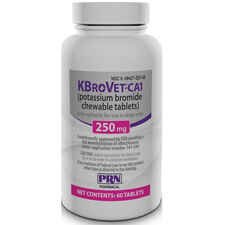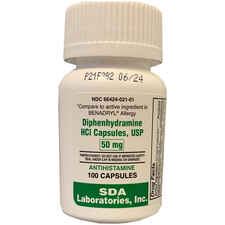6 Common Pet Emergencies to Be Prepared For
Doctor of Veterinary Medicine

While efforts are made to answer all questions as quickly as possible, if an immediate answer is required or if your pet is in need of urgent or emergency care, contact your pet's veterinarian immediately.
Doctor of Veterinary Medicine

You will receive an answer from Dr. Lindsay and our vet/tech team as soon as possible, usually the same day.
All answers are provided for informational or educational purposes only, and are intended to be a supplement to, and not a substitute for, the expertise and professional judgment of your pet's veterinarian.
It may be necessary to consult your pet's veterinarian regarding the applicability of any opinions or recommendations with respect to your pet's symptoms or medical condition.
CloseDoctor of Veterinary Medicine

An error has occurred, please reload the page and try again.
CloseWhile efforts are made to answer all questions as quickly as possible, if an immediate answer is required or if your pet is in need of urgent or emergency care, contact your pet's veterinarian immediately.
There is no answer related to your question

No pet parent wants to think about having a pet emergency, but being prepared when one happens can make the situation easier for everyone involved. When an emergency occurs, remember to stay calm. You'll be able to help your pet more if you keep a level head, and panicking will just increase your pet's stress as well. First, try to stabilize your pet and ensure he/she can't be injured any further. Then, call your veterinarian and explain the situation. He or she will be able to give you tips on how to handle the emergency and will tell you if you need to rush your pet to the vet.
Being prepared in the face of an emergency can make a big difference in how your pet gets through a situation. Keep your pet's medical records at hand, along with emergency phone numbers for the veterinarian, poison control and nearest animal hospital. You should also take steps to prepare a pet first aid kit. This kit should include gauze, antiseptic wipes, tweezers, scissors, styptic powder and other related items. Having this on hand will ensure you have the supplies you need to help your pet in an emergency.
Below is a list of six common pet emergencies and the steps you can take if, unfortunately, any of these happen to your pet.
Your pet is bleeding from a body opening
It can be scary to see blood either on your pet or in his or her surroundings, but it's important to stay calm and figure out where the blood is coming from. Once you have identified the source of the blood, think about the other symptoms your pet currently has. Then, call your veterinarian and explain the situation.
For example, if your pet has blood in his or her urine, consider whether your pet has been having trouble urinating or if he/she has been going more frequently. These symptoms could indicate a urinary tract infection. Your vet can test for that during an office visit. If this is a common problem for your pet, cranberry supplements can help improve bladder health and may reduce the number of UTIs your pet has.
Your pet has open wounds or bite marks
If your pet is bleeding heavily, has deep cuts or punctures, or seems like he/she is in shock, it is important to get prompt veterinary care. Using a clean cloth, apply pressure to the bleeding wounds while transporting your pet to the veterinary clinic.
For smaller wounds and scrapes, apply pressure to the wound with a clean cloth until bleeding has subsided. If the wound is still bleeding after five minutes, your pet may need veterinary care. It is important to clean the wound and the surrounding area with antiseptic wipes and sprays to prevent infection. You can then apply liquid bandage to small wounds to seal them.
If your pet is licking his/her wounds and preventing them from healing, an inflatable collar may be needed. Some pet parents have also found an old t-shirt to be useful in protecting healing wounds on their pets' torsos.
If any wounds aren't healing after a few days or your pet becomes lethargic, bring your pet to the veterinarian. He/she may need stitches or antibiotics to heal properly.
Your pet is having a seizure
Seizures are characterized by a loss of bodily control and the occurrence of sudden, violent spasms. If your pet is having a seizure, it is very important to keep your hands away from his/her face. Pets cannot swallow their tongues, and attempting to put anything in your pet's mouth could result in him/her accidentally biting you.
Make sure there is nothing around that could hurt your pet, such as sharp objects or furniture. Keep other people and pets away while your pet is seizing, and speak to your pet reassuringly. Pets will often feel disoriented after having a seizure and speaking to him/her calmly can help calm him/her down. Also, try to note when the seizure starts and stops so you know how long it lasts.
Seizures are not typically dangerous for pets, but make sure you call your veterinarian after to talk about it. If the seizure lasts more than five minutes, or if your pet has multiple seizures, you may need to bring your pet to the veterinarian immediately for treatment.
Your pet is having a heat stroke
Heat stroke can be a serious threat year-round, but it is especially important to guard against heat stroke during the hot summer months. You can protect your pet by helping your pet to drink more water naturally with the use of a pet drinking fountain so he or she stays hydrated. When it comes to exercise and playtime, keep your pet inside during the hottest times of day and only take your pet for a walk in the early morning or evening. Also, never leave a pet in a hot car. An experiment by veterinarian Dr. Ernie Ward showed the temperature in a car can climb 23 degrees in just 30 minutes, and cracking open the windows does little to keep the car cool.
Signs of heat stroke include excessive panting and bright red gums and ear tips. In extreme circumstances, the pet may collapse or have a seizure, and death can follow.
If you think your pet is having a heat stroke, try to cool him/her down by putting him/her in a tub of cool water or by applying wet towels to your pet. Call your veterinarian and continue cooling your pet down with wet towels on the way to the vet clinic.
Your pet is having an allergic reaction to an insect bite
Pets have allergies just like we do. While some allergic reactions are mild and can be treated with medication or topical sprays, others are very serious. If your pet has facial swelling, difficulty breathing, or if your pet collapses, take him/her immediately to the vet for treatment.
For pets with less serious allergies, you may notice swelling around the bite area, hives or general itchiness. These symptoms can often be treated with generic Benadryl or with an antihistamine. Your veterinarian can recommend a product and will give you the correct dosage for your pet.
You can also try an anti-itch spray if the bite area seems to be particularly bothersome for your pet. Products with aloe vera and hydrocortisone will help soothe the area and provide temporary itch relief while the oral medication kicks in.
Your pet has an injured nail
Cats and dogs have something in their nails called a quick which, when cut, bleeds and triggers a sensation of pain. The quick can be injured if a nail is cut back too far or if a pet's nail gets caught on something. An injured nail can bleed quite a bit, so it's important to remain calm and keep pressure on the nail to reduce bleeding. If the quick has just been nicked and is not seriously injured, you can apply a styptic powder product, such as Kwik Stop, or a clotting gel to the nail to stop bleeding. Some of the products made for injured nails will also have a component in them to numb pain in the area. If the bleeding doesn't slow, or if the nail itself seems to be coming off, take your pet to the veterinarian.
For pets that become debilitated or weakened, ask your veterinarian about Viyo Recuperation which is a liquid supplement to help your pet return to normal health over 14 days.
 Swipe
Swipe

























